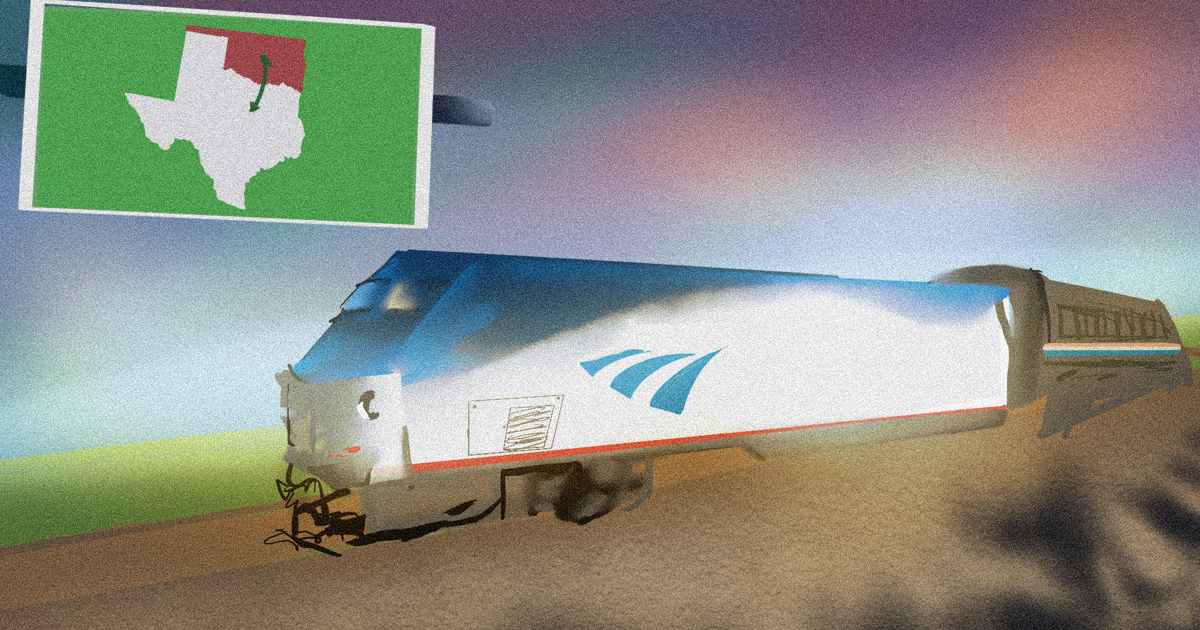The Heartland Flyer Amtrak train route has served North Texas and Oklahoma since 1999 as a cost-effective way to travel between the two sprawling regions. The route was initially scheduled to shut down at the beginning of October.
Canceling the Heartland Flyer route would jeopardize the positive economic effects the Heartland Flyer line has on North Texas and Oklahoma locals for generations to come. What happens to the Heartland Flyer route will set the example for how public transportation is regarded in the state.
The Heartland Flyer is a daily train that runs along I-35 to connect the Oklahoma City and DFW area. It is operated in partnership between the Texas Department of Transportation and the Oklahoma Department of Transportation, according to the Amtrak media center.
The cancellation follows a decision by state officials in June to deny the Texas Department of Transportation a request for $3.5 million in appropriations to keep the route operational.
However, after a $3.5 million cash infusion from the Regional Transportation Council of the North Central Texas Council of Governments — the regional metropolitan planning organization for North Texas — the route will be able to continue for at least another year.
The Heartland Flyer served over 63,000 passengers in 2022. That number increased to 80,000 passengers during the 2024 fiscal year, generating $2.2 million in ticket revenue for Amtrak.
Additionally, the Heartland Flyer generated $5.3 million in revenue, alongside $23.7 million in economic activity. Amtrak also employs 50 full-time crew members to keep the route running daily. Without the route, those crew members would be out of a job, and the positive economic impact that the route provides would also be lost.
Local towns, such as Gainesville, Texas rely on the route to connect their residents to larger cities like Fort Worth. According to the Gainesville Economic Development Corporation, almost 7,000 passengers boarded or disembarked the route in Gainesville in 2024.
“It provides a vital transportation option for Texans and Oklahomans alike, and losing it will be a major setback for mobility, our environment, and our economy,” Gainesville Mayor Tommy Moore said in a press release.
As sprawling urban development consumes North Texas land, some residents use the route as a way to commute easily.
“I’ve heard from individuals who frequently use the Heartland Flyer to connect with their families,” said Paulina Schutt-Swiatkowski, the communications and outreach director for Gainesville, in an interview on Sept. 16. “They commute to work because Gainesville has a really low cost of living, especially relative to bigger cities like Oklahoma City or the metroplex.”
North Texas, as a region, has also experienced significant population growth, with Tarrant County’s population increasing by 22.2 percent from 1.8 million in 2010 to 2.2 million in 2025.
A larger population leads to more individuals owning private vehicles and contributing to higher traffic levels. Higher traffic congestion leads to increased accidents, lower air quality and higher economic costs. The most effective way to alleviate traffic is to encourage people to use public transit.
Another factor that makes it critical for the Heartland Flyer to continue is the upcoming 2026 World Cup, where the DFW metroplex is expected to play a significant role. The Federation Internationale de Football Association announced that the metroplex will host nine soccer matches, the most out of any host city, along with the international broadcast center for the whole competition.
While the World Cup will come and go, the factors that make DFW a center for business and commerce will continue to sharpen. However, if DFW loses the Heartland Flyer, that edge would be lost, and DFW would appear less competitive, potentially harming its business.
Having the Heartland Flyer as a vital piece of public transportation for the metroplex is crucial in attracting visitors from Oklahoma and setting a positive example for promoting public transportation in the area.
Alongside a cascading effect on other public transit systems in DFW, such as Dallas Area Rapid Transit and Trinity Metro, canceling the Heartland Flyer could also lead to reduced support from cities and the state government. Fort Worth should strive to keep the Heartland Flyer operating not just for those who use the route now, but also as a promise for what public transportation in DFW could be in the future if it is properly invested in.
The Texas State government must step up and do its due diligence to fund public intercity transportation, especially since community leaders across North Texas and Oklahoma have expressed the significance the Heartland Flyer has for the area. If the Heartland Flyer is not properly invested in now, public transportation in DFW will take a step back, and communities that benefit from it will suffer the consequences.

